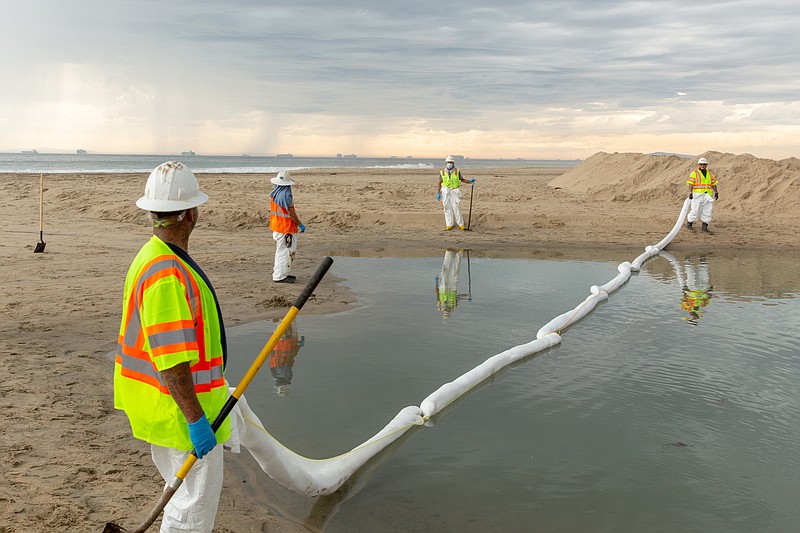Once again, the California coastline is inundated with oil.
Since I began working on the history of the 1969 Santa Barbara oil spill, every time crude oil sullies U.S. waters and beaches, I wait for the same sad, misleading official narrative.
Over the past few days, we learned that a pipeline from an offshore oil platform off the coast of Huntington Beach spewed as much as 144,000 gallons of oil into the ocean. In response, industry and government officials touted technology's great potential to mitigate the damage and save the lives of fish, seals and shorebirds, just as Union Oil and the Nixon administration did in 1969.
They know better.
Oil has chemical properties that hinder its capture once it takes to water. Dedicated emergency spill responders will do their best, but the tools they have now have little more chance of succeeding than they did in the case of the Deepwater Horizon spill in 2010 or the Exxon Valdez spill in 1989, or the spill in Santa Barbara more than 50 years ago.
Oil containment booms have been in use since the 1960s; the only difference now is the type of absorbent they contain. Computational models of seaborne oil perform poorly and hamper progress. The booms in 2021 could not protect the rich ecosystem of Huntington Beach's Talbert Marsh from the encroaching oil last weekend, in conditions of calm seas, just as containment could not protect Santa Barbara in 1969.
Over the next days and weeks, oil will wash up on our beaches as it drifts along with the waves, currents and wind. As with other oil spills, it will float in sheens that break up or clump together to form tar balls.
The sheens may stay away from the shoreline, out of view of most of us, but they will be no less threatening to life in the sea. As the oil shape-shifts, Amplify Energy, which owns the pipeline that leaked will explain how it stopped the flow - but how quickly and how completely? It will investigate, and based on past experience, do what it can to avoid responsibility for the spill's ugly damage.
Rescuers and federal, state and local agencies will work to remove oil from the ocean, clean the beaches, save birds and sea mammals, and recover at least part of the cost of the spill.
Over the last few decades, the primary variations in this familiar narrative reflect changes in the oil industry, and not necessarily for the better.
In the past, corporate giants such as Union Oil, Exxon Mobil, BP and Shell, the original developer of the oil field off Huntington Beach, would have been nominally and to at least some degree financially responsible for the harms of a spill. But Big Oil has sold many of its offshore facilities to smaller firms with less capital and clout, and with lesser public reputations to protect.
The offshore platforms and pipelines that are the source of the oil now overwhelming our shorelines were built in the early 1980s. Other oil infrastructure in federal waters off the California coast dates back to the mid-1960s. We know we can expect more problems and failures with this aging equipment in the future.
There is at least one hopeful change in the oil spill story - an end to absolute power of fossil fuel. In 1969 the residents of Santa Barbara, appalled by the catastrophe they faced, called for a boycott of the oil companies. It didn't go far; oil and gas were America's default energy source. But in 2021, industry and consumers have real alternatives, if we choose to pursue them.
The long-term questions remain: When will we act to end the drilling, rather than perfecting our ritual responses to the results? How many more California beaches will be closed, how many birds will be killed, and how much more sea life and shoreline will we sacrifice to oil company profits? What will it take before we answer Santa Barbara's visionary call from more than 50 years ago?
Teresa Sabol Spezio teaches environmental policy and justice at Pitzer College and is a practicing environmental engineer.
The Los Angeles Times
